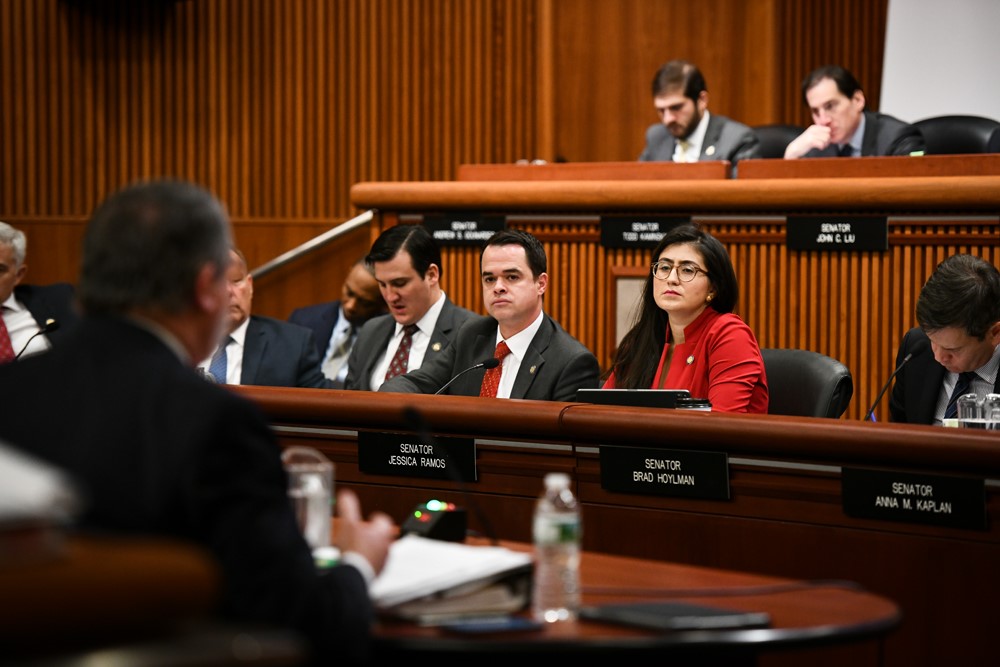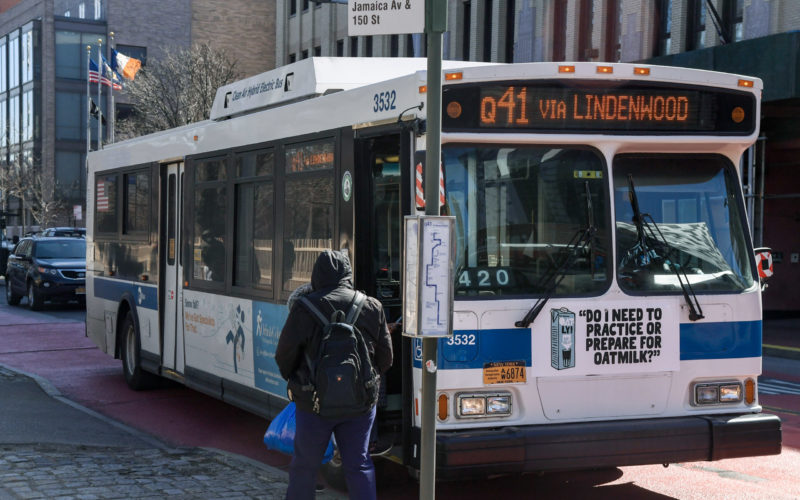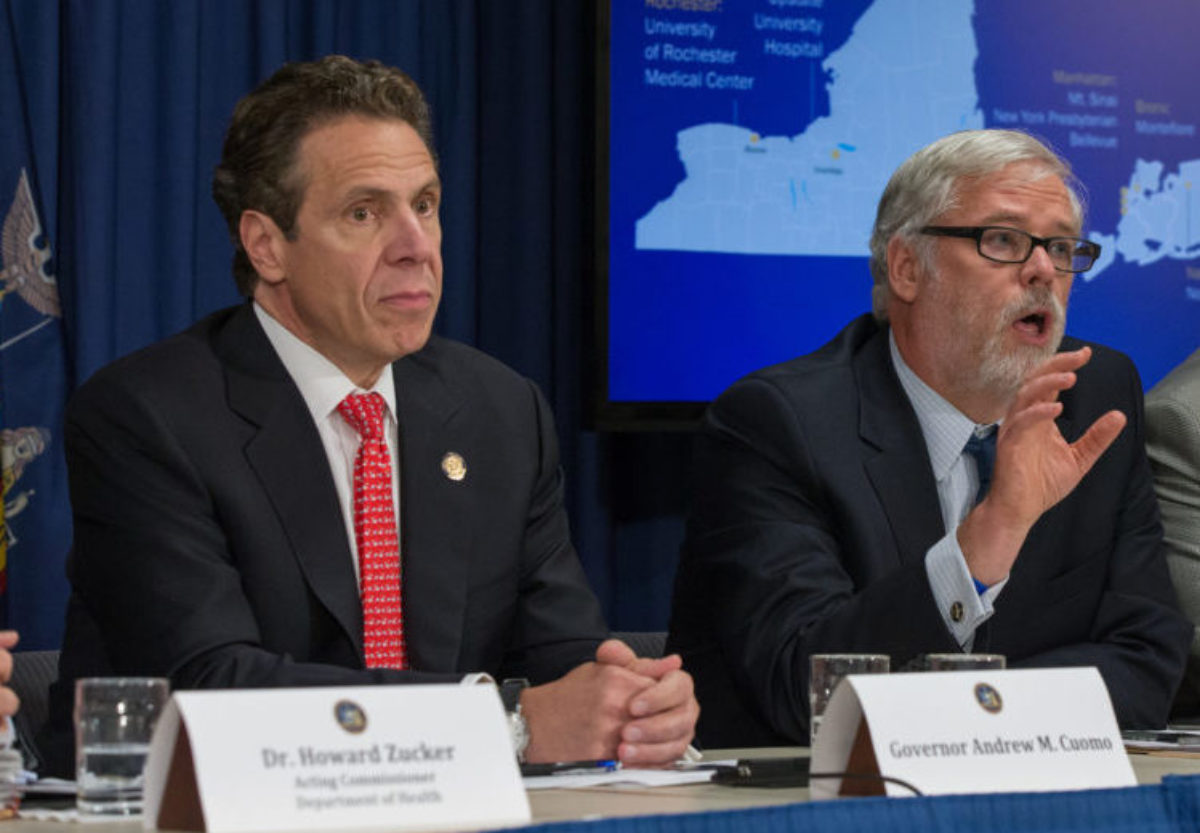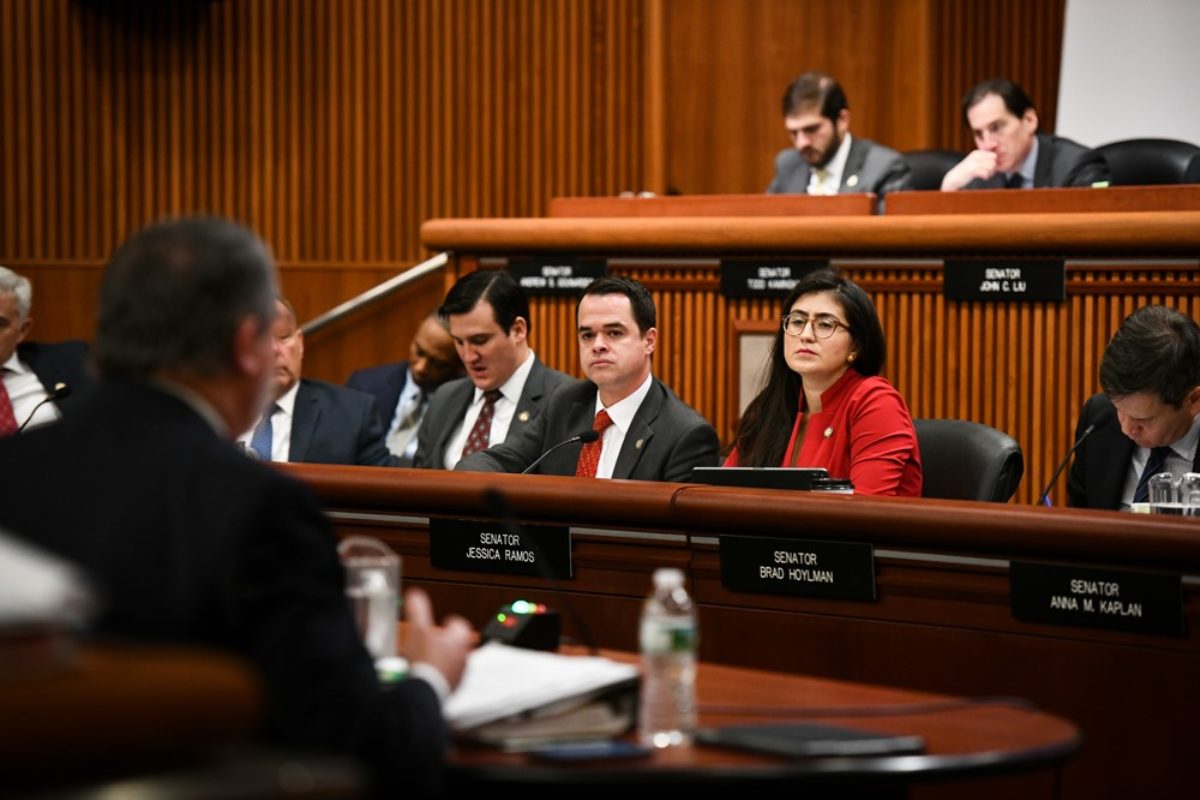
February's MTA oversight hearings were the first time in years that State Legislators had directly questioned MTA officials Photo Credit: Office of State Senator David Carlucci
Effective advocacy is an exercise in persuading the right people to make the right decisions. For transit campaigns, winning better service hinges on both identifying the officials accountable for agency performance (which isn’t always obvious given the complexity of transit governance) and gaining access to information that can point the way toward specific policy reforms (which can be difficult if the agency isn’t transparent about performance data and project management).To navigate this terrain, it’s useful to plot out the transit agency’s executive structure, oversight mechanisms, and transparency practices.
With its Open MTA report, the good government organization Reinvent Albany has produced such a guide for the nation’s largest transit agency.
Broadly speaking, the Reinvent Albany report seeks to answer the following questions:
- Who possesses executive authority at the transit agency, and how is it exercised?
- What are the relevant external sources of government oversight, and how are they applied to the agency?
- What are the agency’s own mechanisms to disclose information to the public, and how can they be improved?
The Open MTA report deeply examines a single (very large) agency. But the exercise of mapping executive authority, outside oversight, and transparency systems can and should be replicated by transit advocates in other cities.
If you’re campaigning for more reliable service or smarter capital investment, you need to know where to apply political pressure to trigger action. To set goals for a campaign and to make specific asks, you need access to information from the agency — like accurate measures of service quality or the terms of contracts with vendors.
Transit agency boards are vested with varying degrees of policy-making power, and advocates should strategize accordingly. Even at agencies with empowered boards, the final word on transit policy typically belongs to elected officials at the city, county, or state level who must be held accountable to steer transit in a better direction. In New York, Reinvent Albany makes clear that the governor wields control over the MTA and is ultimately the official most accountable for performance — much moreso than the members of the MTA Board, a plurality of whom are appointed by the governor.
The report also highlights how external oversight of the MTA has atrophied, especially in the state legislature. Unlike most other MTA oversight bodies, members of the legislature are not appointed by the governor. But even with this independence, the Assembly and State Senate have all but forgotten how to flex the oversight muscle. The Assembly has held zero MTA hearings since 2014, and the State Senate held none from 2015 through 2018. It is perhaps not coincidental that subway service reached a nadir during this lapse in attention.
With a new cohort of state senators in office, including several representing New York City districts full of transit riders, there was a glimmer of activity earlier this session. While congestion pricing was under consideration, the Senate held a hearing on subway and bus service, and it has held separate hearings on Metro-North and LIRR. It’s too early to call this a new habit, but with some cultivation it could grow into one. Reinvent Albany recommends regular hearings to shed light on MTA operations, capital spending priorities, and other topics, as well as the creation of subcommittees devoted specifically to the MTA.
Ultimately, it’s to the MTA’s advantage to be open about shortcomings in service and project delivery, both to confront issues quickly and to gain public trust. A defensive posture may blunt criticism in the short run but provides cover for delayed response and internal complacence, an environment where manageable problems can snowball into crises. Current MTA practice remains decidedly opaque, stymieing reporters’ freedom of information requests and burying information in PDFs instead of public posting searchable databases.A more open posture can prevent problems from festering, and Reinvent Albany has no shortage of ideas for MTA transparency, expanding on its previous recommendations for FOIL reform. These steps include releasing the underlying datasets for its performance dashboard, creating a contracts database, and adopting an Open FOIL platform to respond to information requests.
Governor Cuomo’s selection of Pat Foye to serve as MTA Chair provides cause for optimism on the transparency front. As executive director of the Port Authority, Foye was instrumental in the adoption of Open FOIL, and he has publicly pledged to do the same at the MTA. The same spirit should guide a thorough overhaul of the MTA’s public reporting and data sharing policies.
 On the Brink: Will WMATA’s Progress Be Erased by 2024?
On the Brink: Will WMATA’s Progress Be Erased by 2024?
The experience of being a WMATA rider has substantially improved over the last 18 months, thanks to changes the agency has made like adding off-peak service and simplifying fares. Things are about to get even better with the launch of all-door boarding later this fall, overnight bus service on some lines starting in December, and an ambitious plan to redesign the Metrobus network. But all of this could go away by July 1, 2024.
Read More How Much Service did the Largest Transit Agencies Run in 2021?
How Much Service did the Largest Transit Agencies Run in 2021?
In this post, we’re drilling down into 2021 service levels across mode in the seven highest ridership cities to see the choices agencies are making about how to allocate service, as well as to gauge the impact operator shortages are having.
Read More
